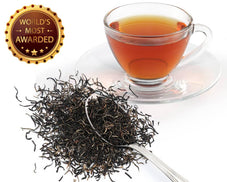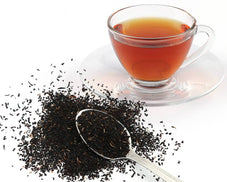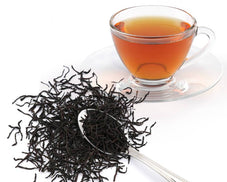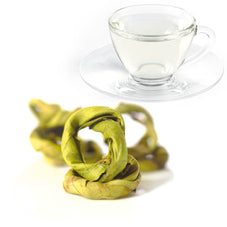
Ceylon Black Tea
Ceylon black tea, like other "true" tea types, come from the tea plant called Camellia sinensis. But what sets black tea apart from its cousins is the way it is processed.
Where green tea is steamed but never oxidized, and white and oolong teas are only partially oxidized, black tea undergoes full oxidation. After picking, the leaves of the tea plant are withered, rolled, and fermented for a number of hours before the black tea is finally dried and packed into different shapes and sizes.
This unique processing method actually accounts for the stronger and more flavorful taste of Ceylon black tea. The way Ceylon black tea is packed is also another reason why its flavour is longer-lasting, making them excellent products for export and shipping.
There are several varieties of black tea. The main difference is in the places or regions where the tea plants are grown. Like wine regions in France, Australia, and California, black tea that come from one region has slight characteristic differences from black tea grown in other regions. Because of this, black tea types are often named after the name of their growing region in order to make it easier to identify them by association.
One important type of back tea is Ceylon Black Tea, grown on an island of the same name in Sri Lanka where extreme climate and rough physical nature of the countryside play an important role in its characteristic taste.
Before Ceylon was ever a tea growing region, it was first a coffee region. Coffee planting in Sri Lanka started around the 1800s, roughly three centuries after the Portuguese first landed in search of spices. In 1837, Sri Lanka recorded a historic 4,000 acres of coffee on the island of Ceylon alone, prompting coffee trade and export in the then British colony. However, nearly forty years later, coffee planting in Sri Lanka suffered a huge setback from which they were never able to recover.
It was at the beginning of 1865 when coffee planters of Ceylon noted a leaf fungus appearing that caused the leaf to die and drop off the dreaded Hemileia vastatrix or Devastating Emily. For a time, planters planted at a faster rate to overcome it, to no avail. By 1867, planters began looking at tea and planted them at fields, rather than at trials. The reversal was dramatic, and Sir Arthur Conan Doyle, himself, wrote in his De Profundis:
ìThose were the royal days of coffee planting in Ceylon, before a single season and a rotting fungus drove a whole community through years of despair to one of the greatest commercial victories which pluck and ingenuity ever won. Not often is it that men have the heart when their one great industry is withered, to rear up in a few years another as rich to take its place, and the tea fields of Ceylon are as true a monument to courage as is the lion at Waterloo.
The first Ceylon black tea that was produced in the 1860s was literally rolled by hand or arm, on bungalow verandah floors, or on tables and then fired over charcoal fires. The resultant Ceylon black tea was a fruity, full-bodied beverage with a slightly smoky taste.
In recent years, Ceylon black tea leaves are processed using developing machines, but quite a few are still made the old-fashioned way. Lumbini Tea Valley is now heading the speciality tea market in Sri Lanka. Sinharaja Wiry Tips is one of the best-known teas in the world. As a matter of fact, it is the World's most awarded tea.





